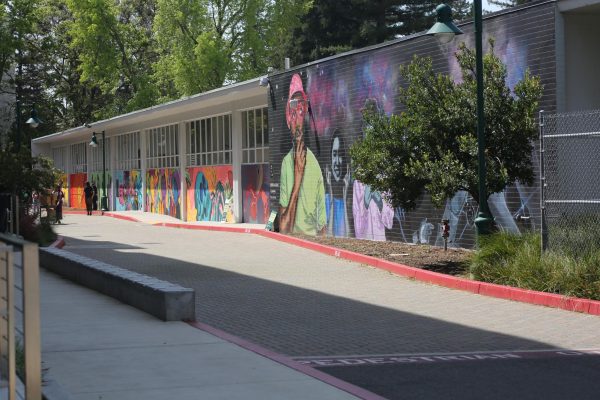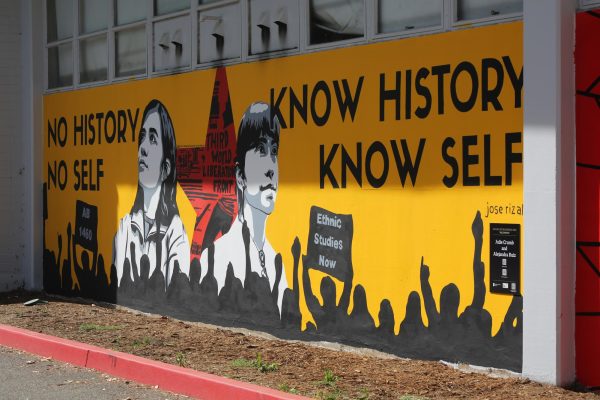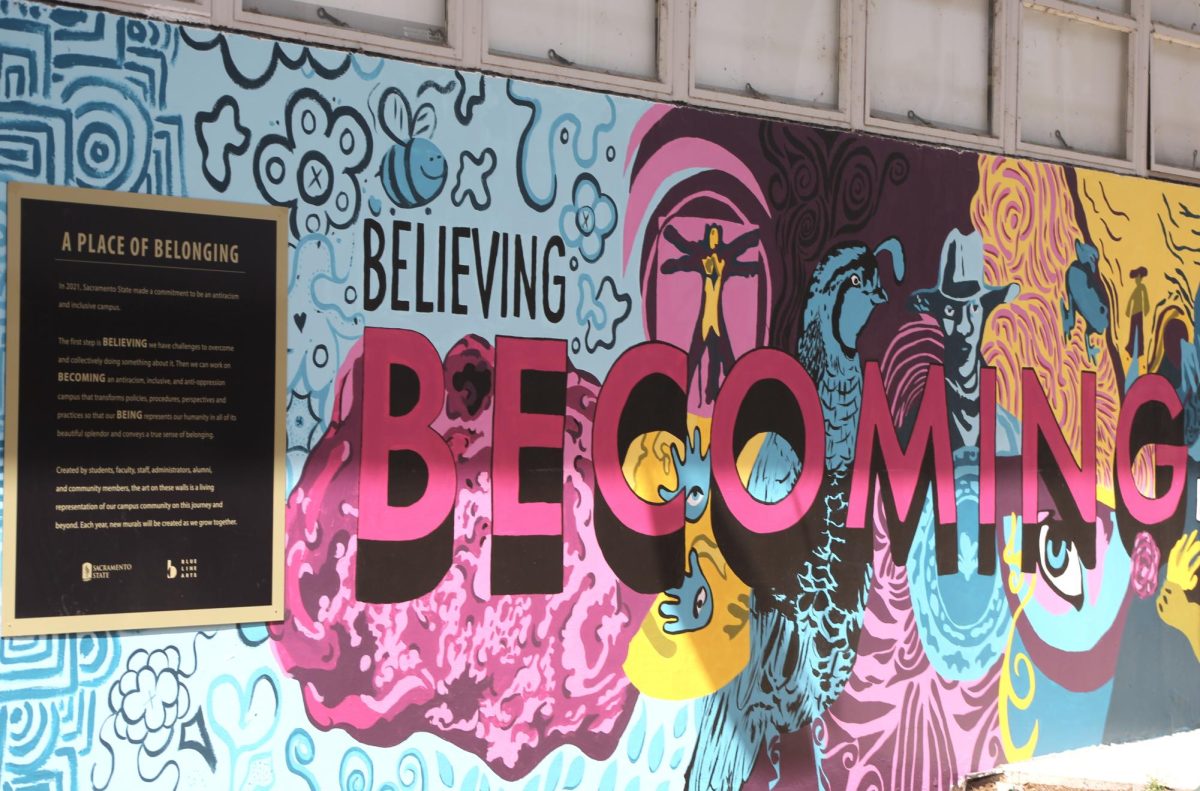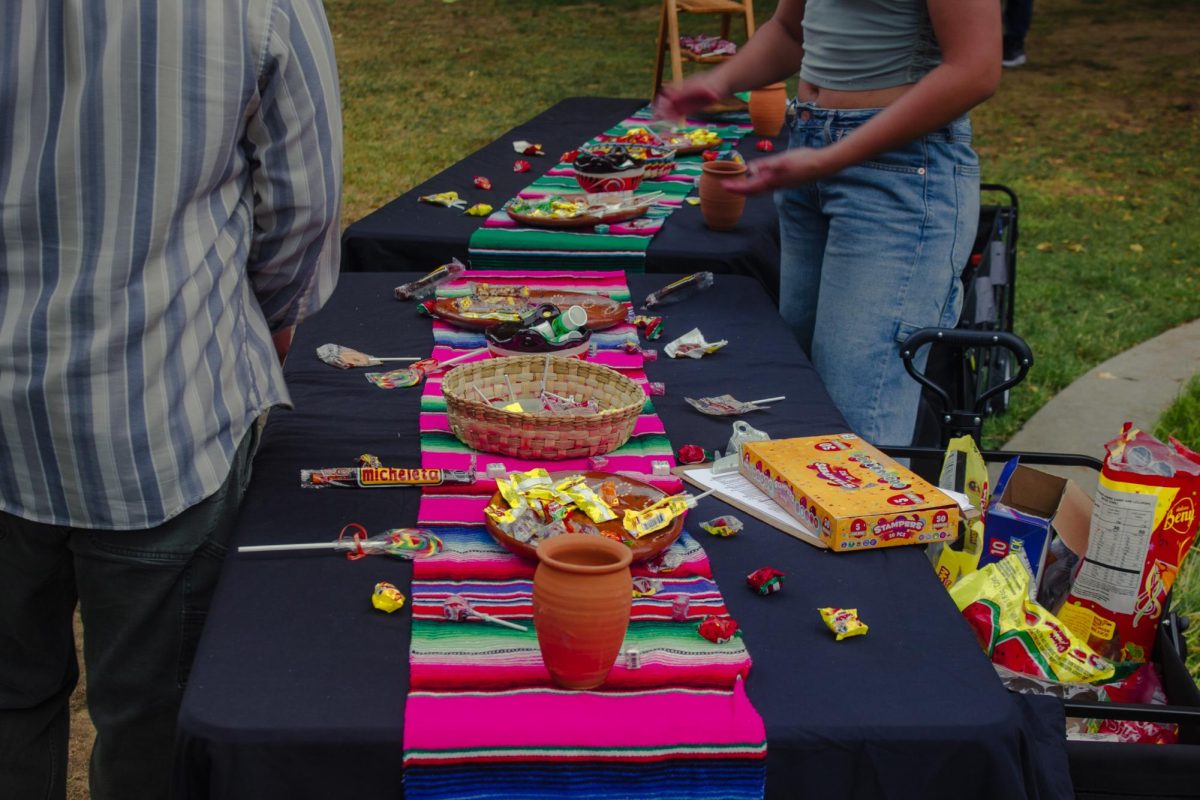Sacramento State unveiled the mural collection “Becoming” that entailed seven new murals, on the south wall of the Ernest E. Tschannen Engineering Teaching and Research Building on Wednesday.
The collection is a part of “A Place of Belonging Murals” the multiyear project outlined in the Antiracism and Inclusive Campus Plan. Students, staff and members of the campus community were selected to create murals as one of the objectives for institutional commitment.
The university’s diversity officer and Vice President of Inclusive Excellence Mia Settles-Tidwell said the murals are a visual representation of the university’s efforts toward diversity, equity and inclusion. The murals additionally serve as conversation starters for the campus community.

“It represents the creativity that is needed to reimagine a campus where everyone belongs,” Settles-Tidwell said. “It takes a community to decide that together we will take this journey as we become an antiracism and inclusive campus.”
RELATED: Sac State hosts showcase for progress of Antiracism & Inclusive Campus Action Plan
The university partnered with Blueline Arts, a nonprofit art education center and gallery in Roseville, to help artists during the mural painting process.
Julie Crumb, a recent studio art graduate, collaborated with fourth-year studio art major Alejandra Ruiz to honor each of their cultures.
“This mural references the infamous SF State protests in 1968, led by the Third World Liberation Front, and the pivotal legislation Assembly Bill 1460, which mandates Ethnic Studies for all CSU students,” Crumb said. “I hope people walk by this mural and find themselves curious enough to learn about AB 1460, and the Third World Liberation Front.”

Their mural also features portraits of both of the artists, a quote from Philippine national hero Jose Rizal, and the notable Third World Liberation Front logo designed by Xicanx printmaker Jesus Barraza. Philip Altstratt, an alumnus and Sac State media production specialist, returned to participate in the project for a second time. In his mural, he showcased puppets that were previously used in his mural for the first stage, “Believing.”
“The puppets are back,” Alstratt said. “But the dynamic has changed quite a bit where the male figure is very large and almost holding the female figure in the palm of his hands only she’s beginning to sort of levitate away and all the light and energy in the painting is radiating from within her.”
Other artists who were chosen to participate included current students Giselle Lacap, Nicole Sena and Jaci Zemenchik, while other guest artists included Jose Martinez, Eddie Palacios, Heather Hogan and Wood Farguheson.
“Murals are rife with meaning,” Alstratt said. “It’s just all about, about what we’re talking about becoming anti-racist and inclusive and really celebrating one another.”
The murals will be on display for the campus community to view until spring 2025, before being replaced by the next set of murals to reflect the final collection, titled, “Being.”

























































































































